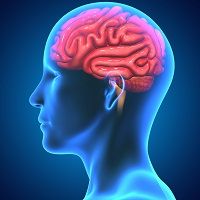Article
No Tool Yet To Identify Visual Impairments after Strokes
Author(s):
Despite the fact that two thirds of stroke survivors could suffer from a visual impairment, nearly half of stroke units do not even assess vision. A recent report suggests that more must be done to assess the outlook for vision in stroke survivors.

Because about two-thirds of stroke survivors will suffer from a subsequent visual impairment, developing a tool to screen for such impairments is vital, according to a recent report.
Researchers from the University of Liverpool in the United Kingdom conducted a literature review in order to provide a systematic overview of the various tools available to screen for visual impairments in patients who have had a stroke. The researchers found randomized controlled trials, controlled trials, cohort studies, observational studies, other systematic reviews and retrospective medical note reviews, from which 25 articles and nearly 3,000 patients were included in their overall report. Those patients were all adults aged over 18 years who were diagnosed with a visual impairment as a direct result of a stroke.
The investigators learned that the majority of the articles discussed tools used to identify visual perception — which includes visual neglect – while a few screened for visual acuity, visual field loss, or ocular motility defects.
Six of the articles the researchers found pointed to nine different screening tools which combined the visual screening assessments with screening for general stroke disabilities. From those studies, three used screening for visual acuity, three used screening for visual field loss, and three of them screened for ocular motility defects. All six screened for visual neglect. There were two tools that screened for all the visual impairments.
“The current tools screen for only a number of potential stroke related impairments meaning many visual defects may be missed,” study author Kerry Hanna said in a press release. “The sensitivity of those which screen for all impairments is significantly lowered when patients are unable to report their visual symptoms.”
The researchers found an additional 19 articles that reported on individual vision screening test for patients who experienced a stroke: two screened for visual field loss, 11 screened for visual neglect, and six screened for other visual perceptual defects. However, the researchers wrote, most of the tools used do not accurately account for patients with aphasia or other communicative deficits, which are other common problems after a stroke.
In the study, the authors added that even though up to two thirds of stroke survivors could suffer from a visual impairment as a result of the stroke, nearly half of stroke units (45 percent) do not assess vision. They continued that these visual impairments can severely reduce the patients’ quality of life, including being unable to return to work or driving and depression. By creating a tool to identify visual impairments after a stroke, these patients can get more help in their rehabilitation efforts and improve their quality of life.
“Future research is required to develop a tool capable of assessing stroke patients which encompasses all potential visual deficits and can also be easily performed by both the patients and administered by health care professionals in order to ensure all stroke survivors with visual impairment are accurately identified and managed,” Hanna concluded.
The report, entitled “Screening methods for post-stroke visual impairment: a systematic review”, was published in the journal Disability and Rehabilitation and was accompanied at the time by a press release.
Related Coverage:
More Can Be Done for Patients Who Had Minor Strokes




